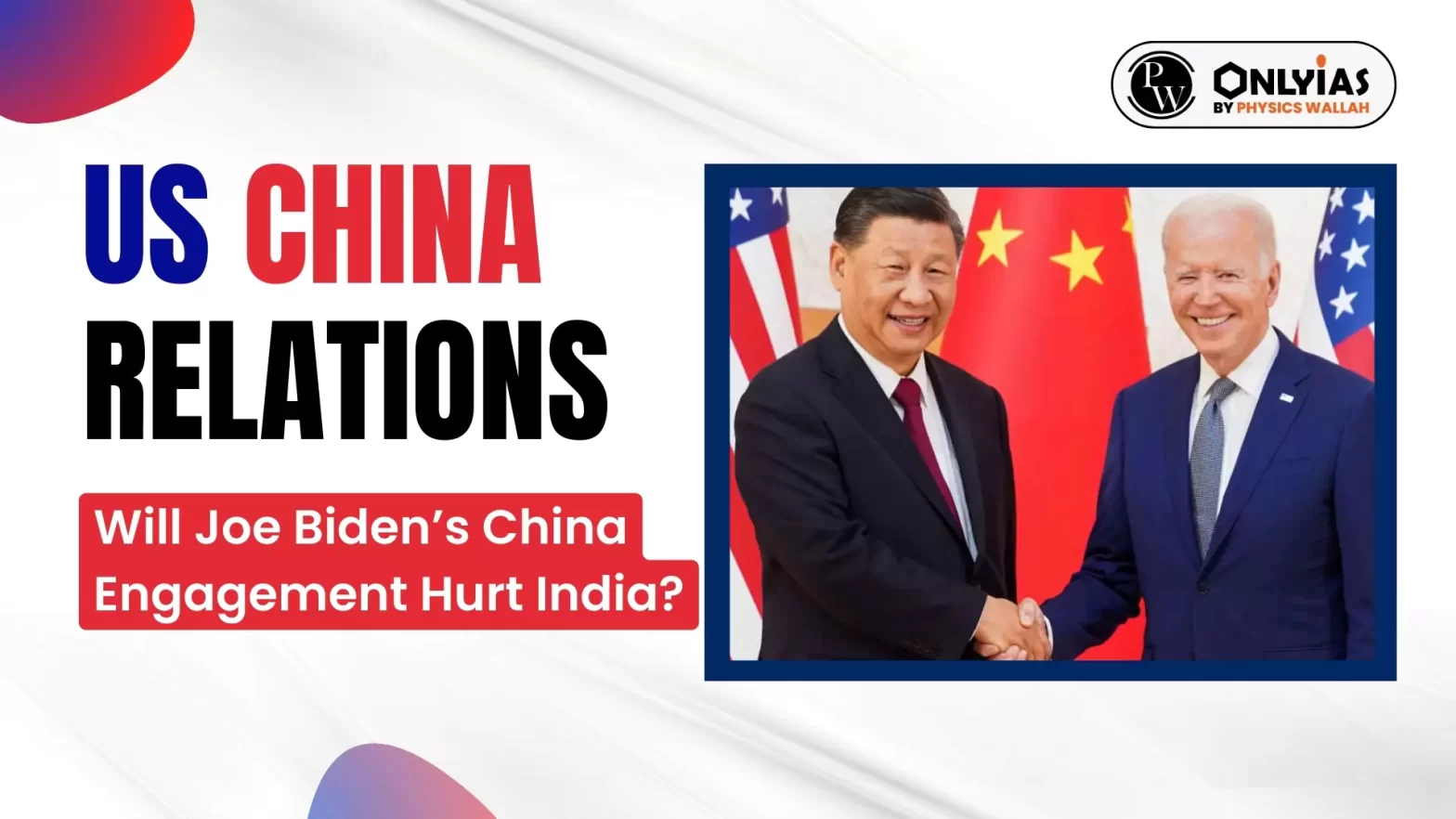Context
This article focuses on the strategy and actions of the US towards Indo-Pacific and China and its future impact.
US China Relations: Sustained High-level Engagement Between US and China
- Prioritize Responsible Competition: The US administration described its China strategy as “responsible competition”, meaning it would cooperate with China where possible and challenge it where it must.
- Prevent Dangerous Conflict: The US also affirmed to do the utmost to prevent the vigorous competition with China from becoming a dangerous conflict.
Actions Taken by the US
-
Reaching Out to China:
- The US is interested in a mutually beneficial economic relationship with China, but will not bear China’s attempt to dominate emerging technology sectors such as solar panels and electricity vehicles.
- Examples: High-level communication between the two sides that began in Bali at the end of 2022 on the margins of the G20 summit.
- The Chinese President visited the US to attend the San Francisco summit of the Asia Pacific Economic Cooperation forum last November.
-
Looking to Japan:
- Various high-level state visits are being conducted such as recently the US President is hosting the Japanese Prime Minister on a state visit to the White House.
- It is to deepen the military-technological partnership between the US and Japan and would involve greater integration of the military structures, more intensive defence-industrial collaboration, and wider advanced technology cooperation.
-
Focus On AUKUS:
- The AUKUS initiative is the planned advanced technology partnership between Australia, the UK and the US — unveiled in 2021.
- Japan could be a valuable potential addition to the grouping which can bring its excellent scientific and technical skills and manufacturing prowess to develop and retain the lead over China.
-
Establishment of Minilateral Institutions:
- Minilateralism is now becoming part of the Asian security landscape amidst the inability of the regional multilateral mechanisms led by the ASEAN to cope with the changing regional geopolitical dynamic.
- Example: Chip Four Alliance— Taiwan, South Korea, Japan and the United States that brings the world’s major producers of semiconductors.
-
The Asian Security Network:
-
- The US’s new approach is about building a web of Asian security networks that pool the region’s military resources, enhance deterrence and ensure peace.
- Example: The US is asking Japan to expand its security assistance to countries in the Indo-Pacific including the Philippines and has nudged South Korea to expand advanced technology cooperation with India.
India’s Views
- Unsustainable Cooperation: For many in the Indian strategic community, maintaining a balance between competition and cooperation is unsustainable.
- Accommodation with China: They worry that the engagement track will prevail at the expense of America’s friends and partners and in favour of China.
- To be sure, as a power far away from Asia and facing no direct threats from China, there will always be reasons for the US to find an accommodation with China.
- As the world’s largest economies with massive interdependence and as leading military powers, their imperatives to engage are real and also their contradictions.
Conclusion
The US approach of the Responsible Competition provides an opportunity for India to enhance its power, become a member of new minilateralism and express itself in the world too that needs the careful navigation of relations with both the US and China.
Also Read: AUKUS Submarine (SSN-A) Programme
| Prelims PYQ (2020):
In which one of the following groups are all the four countries members of G20?
(a) Argentina, Mexico, South Africa and Turkey
(b) Australia, Canada, Malaysia and New Zealand
(c) Brazil, Iran, Saudi Arabia and Vietnam
(d) Indonesia, Japan, Singapore and South Korea.
Ans: (a) |
![]() 10 Apr 2024
10 Apr 2024

